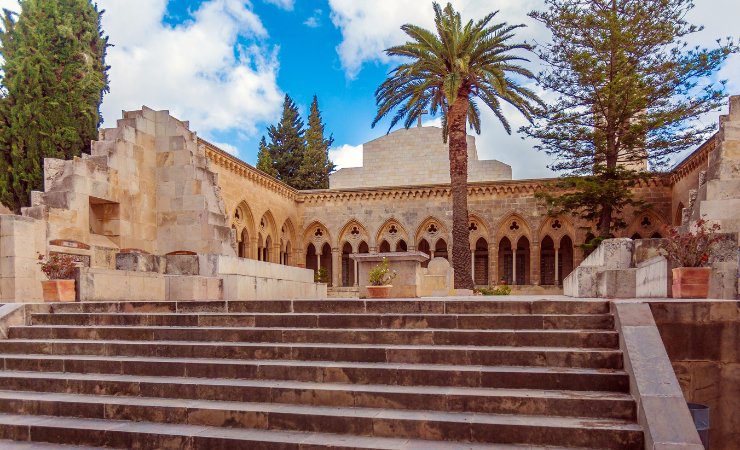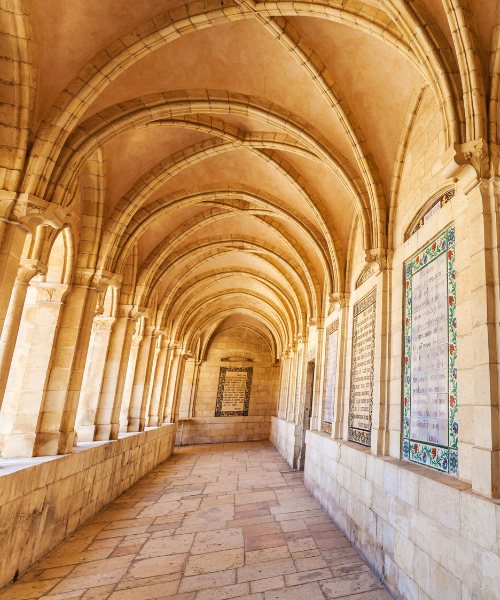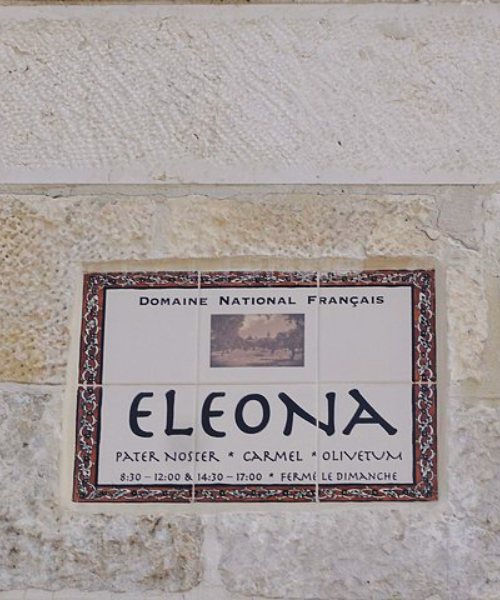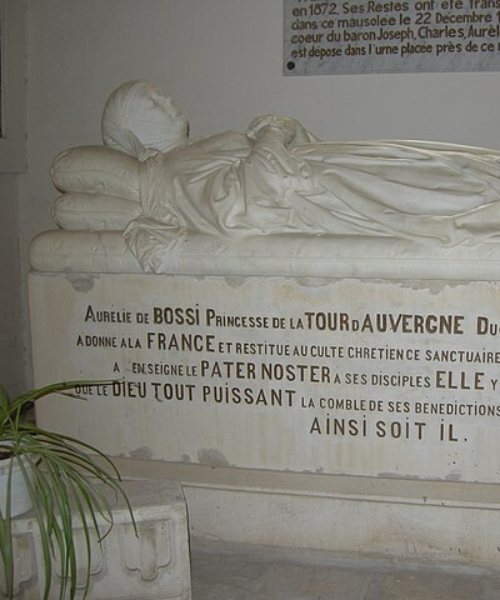The Church of Pater Noster: Helena's Gift
Introduction
Located on the Mount of Olives, the Pater Noster Church is a treasure trove for those seeking a spiritual journey through history. It is one of four churches built by Helena, mother of Constantine the great in the fourth century AD. This sacred sanctuary is not just a church.

Location
The Pater Noster Church graces the Mount of Olives in Jerusalem, Israel. It is close to other churches on the Mount of Olives such as Pater Noster and the Church of All Nations.
Biblical Context
The Pater Noster Church is steeped in biblical significance. According to Christian tradition, this is where Jesus taught his disciples the Lord’s Prayer, as mentioned in Matthew 6:9-13:
This, then, is how you should pray:
‘Our Father in heaven, hallowed be your name, your kingdom come, your will be done, on earth as it is in heaven.
Give us today our daily bread. And forgive us our debts, as we also have forgiven our debtors. And lead us not into temptation, but deliver us from the evil one.’”
A Glimpse into the History of Pater Noster
The current church is built on the ruins of one of the oldest churches in the holy land.
The Byzantine Era: Helena’s Sacred Legacy
In the early 4th century CE, Helena, the mother of Constantine the Great, embarked on a pilgrimage to the Holy Land. She was instrumental in the construction of several churches, including the one on the Mount of Olives. This church, initially known as the Church of the Disciples, was built to commemorate the Ascension of Jesus. It was later referred to as the Church of Eleona, derived from the Greek word for “olive grove.” The church was adorned with beautiful mosaics and quickly became a center of Christian worship.
The Dark Ages: Silence and Ruin
As the 7th century CE dawned, the Muslim conquest of Jerusalem brought about significant changes. The Church of Eleona fell into disrepair and was eventually left in ruins. For centuries, the site lay dormant, with only the olive trees as silent witnesses to its past glory.
The Crusader Period: Rekindling the Flame
In the 12th century, the Crusaders recaptured Jerusalem and recognized the significance of the site. They built a small oratory amid the ruins in 1106, and a full church was constructed in 1152, thanks to funds donated by the Danish Bishop Svend of Viborg. The site became exclusively associated with the teaching of the Lord’s Prayer. However, the Crusader-era church was heavily damaged during Sultan Saladin’s siege of Jerusalem in 1187 and was eventually abandoned.
The Modern Era: Renewal and Rebirth
The modern Pater Noster Church, part of a Carmelite monastery known as the Sanctuary of the Eleona, stands as a testament to devotion and historical preservation.
The church was reborn in the 19th century CE, thanks to the tireless efforts of Princess Aurelia Bossi de la Tour d’Auvergne, often referred to as “Orly de Bois.” She dedicated her life and resources to rebuilding the church on the Mount of Olives.
The architecture of the current church is a harmonious blend of historical reverence and modern elegance. The exterior is characterized by a simple yet dignified facade, with arches and stonework that echo the ancient Byzantine style. The centerpiece of the church’s architecture is the cloister, modeled after the Campo Santo in Pisa, Italy. The cloister is an open courtyard surrounded by arches and columns, and its walls are adorned with ceramic tablets bearing the Lord’s Prayer in over 140 languages, creating a tapestry of global unity.
If you look carefully, you will notice that the church’s structure is incomplete. Work started in 1915, but never finalized.
One of the most poignant architectural features is the incorporation of the ruins of the 4th-century Byzantine Church of Eleona. These ruins are partially reconstructed, and visitors can see fragments of ancient mosaics and columns from the original church.
Within the church’s crypt lies the tombstone of Princess Aurelia. In recognition of her devotion and contributions to the church, she was laid to rest within the Pater Noster Church. Her tombstone is a site of respect and remembrance for visitors and serves as a reminder of the dedication and commitment of an individual whose passion helped to resurrect and preserve a site of immense historical and spiritual significance.



Archeological Finding at Pater Noster
- Byzantine Church Remains: The current Pater Noster Church is built on the ruins of a 4th-century Byzantine church. Fragments of the columns from the original church can still be seen in the yard.
- The Lord’s Prayer Tablets: The church’s cloister is adorned with over 140 ceramic tablets, each inscribed with the Lord’s Prayer in a different language. This collection is a testament to the universality of the prayer.
- The Sacred Cave: Beneath the Church of Eleona, there is a cave believed to be the place where Jesus taught his disciples, including imparting the Lord’s Prayer. This cave was revered by early Christian pilgrims and continues to be a focal point for worship and reflection.
Sources and Additional Reading
Pater Noster Church: Lord’s Prayer, End Times Explained
Wikipedia – Church of the Pater Noster
Nearby Sites
- Chapel of the Ascension: Just a short walk from the Pater Noster Church, the Chapel of the Ascension is believed to mark the spot where Jesus ascended into heaven. This small, round chapel is one of the oldest Christian sites on the Mount of Olives.
- Garden of Gethsemane and the Church of All Nations: Located at the foot of the Mount of Olives. It is believed to be the place where Jesus prayed and his disciples slept the night before his crucifixion. The garden is home to ancient olive trees and the Church of All Nations.
- Dominus Flevit Church: This Roman Catholic church is situated on the western slope of the Mount of Olives. Its name means “The Lord Wept” in Latin. The church is shaped like a teardrop, symbolizing the tears of Christ.
- Tomb of the Prophets: This ancient burial site is located on the western slope of the Mount of Olives and is believed to be the resting place of several Old Testament prophets.



